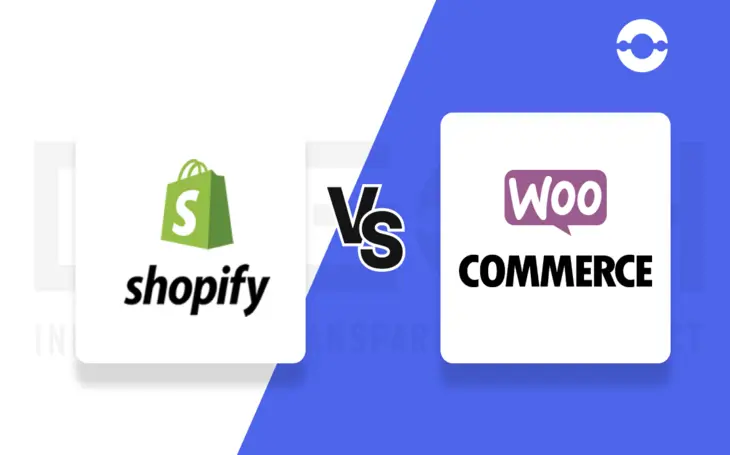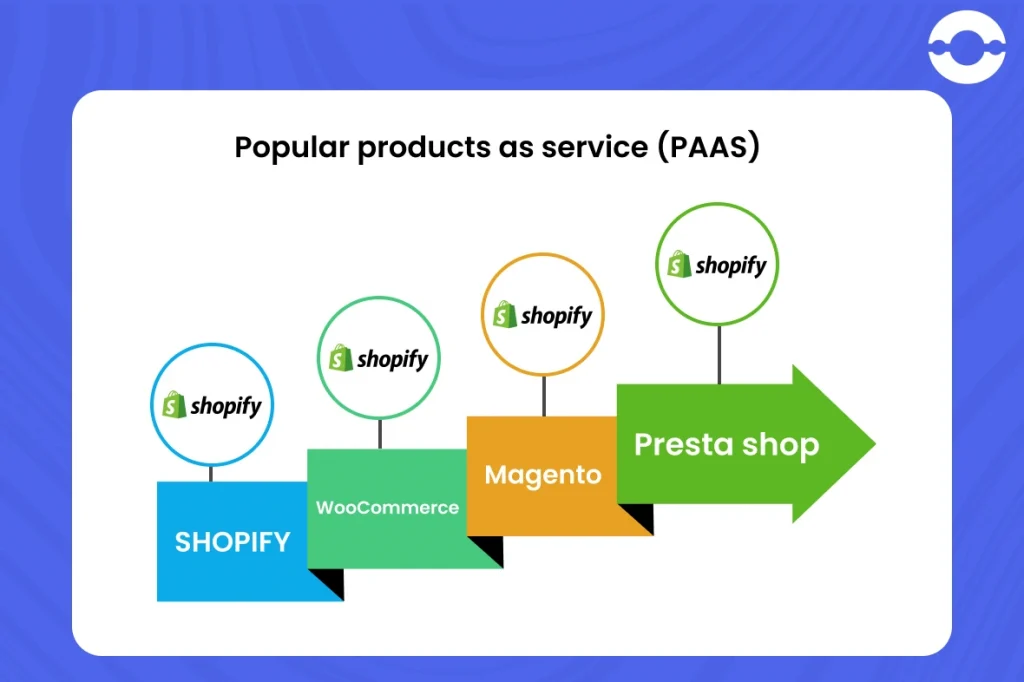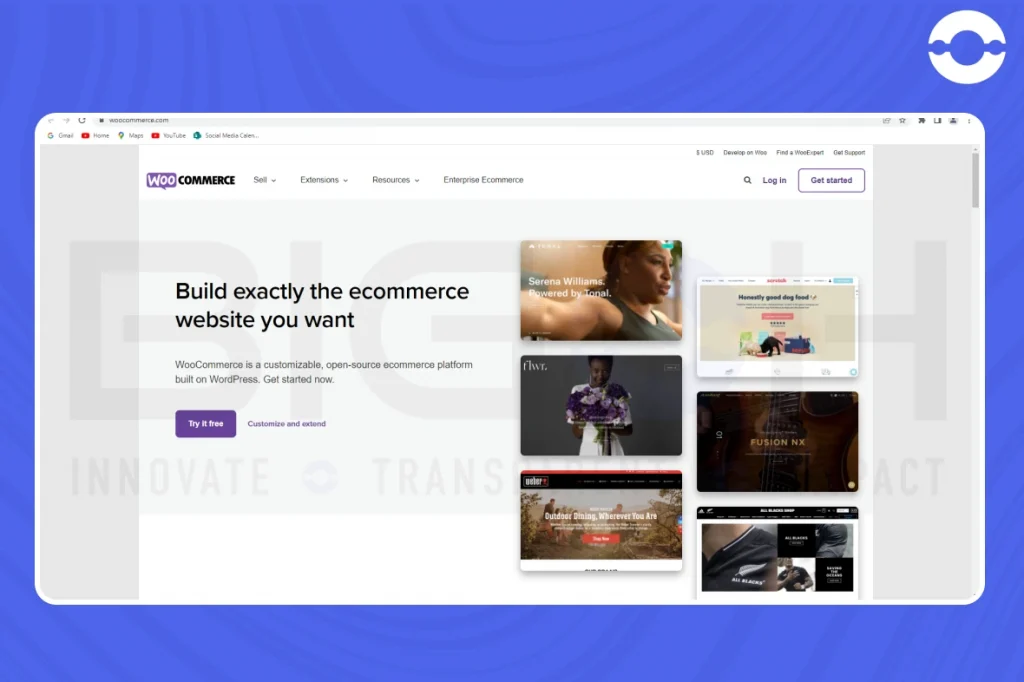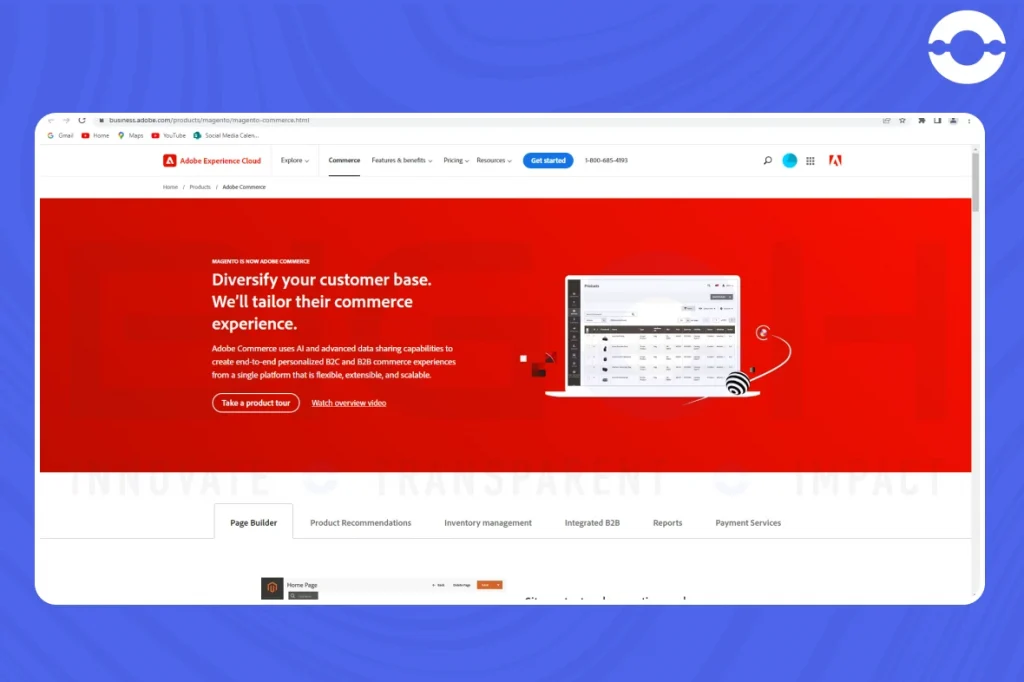
You might have heard about two e-commerce giants: Shopify and WooCommerce. Shopify claims it powers over 8 lakh online stores, while WooCommerce says that it’s considered a popular e-commerce platform. Who is right or wrong?
So, let’s dive into the blog to help you distinguish between Shopify and WooCommerce. Stay tuned with us to know who wins the battle – Shopify or WooCommerce in 2024.
Popular Products As Service (PAAS)

In the past few years, products were sold in one-time transactions, but PAAS is a business model wherein products and services are sold to the customer in a subscription. It’s more like a subscription model where businesses pay for their needed services.
Moreover, customers need not worry about making a large investment to avail of services, and the businesses can sell their products and continue to generate recurring revenue streams.
For example – Shopify, Magneto, Presta Shop, and WooCommerce are popular examples of PAAS-based business models as they offer subscription-based pricing plans to businesses.
In addition, An e-commerce platform would manage the subscription process, handle billing and payments, and manage inventory and shipping.
Some popular PAAS for e-commerce are –
1. Shopify

Shopify is an e-commerce platform that is highly suited for small and medium businesses. Shopify allows you to create a fully functional online store using drag-and-drop functionalities.
It is a cloud-based platform having more than 60 themes that could be free and paid for. It allows customers to do seamless product launches and keep their store up front during high-traffic days.
Additionally, this e-commerce platform has an extensive customization feature that allows you to customize the color, image, fonts, and layout using its built-in image editor.
It allows businesses to set up and manage their online store and do the following things for them: website design templates, inventory management, payment processing, shipping, and delivery management. Businesses pay a monthly subscription fee to Shopify.
Shopify allows you to sell directly on websites, social media, and third-party marketplaces.
It allows business owners to make their online store fully functional in just 15 minutes.

Hence, Shopify proves to be a profitable option for anyone looking to create an online store without coding expertise. Not only that, but it also provides a 3-day free trial to use their services to know if they can suit your business needs.
2. WooCommerce

WordPress provides an e-commerce plugin that is called WooCommerce. WooCommerce allows business owners to turn their WordPress websites into e-commerce stores.
Additionally, It provides business owners with various features and customization options, including selling physical and digital goods, managing inventory, processing payments, and tracking sales.
Besides that, WooCommerce is highly suited for those who own a WordPress blog and want to turn it into an online store.
Compared to Shopify, WooCommerce is an affordable option as it allows an individual to use the plugin for free and can pay transaction fees. If you want to add e-commerce capabilities to your WordPress content management system (CMS), you need to install the WooCommerce plugin.
Let’s look at statistics – Around 5 million websites use WooCommerce. WordPress CMS provides you with various themes and plugins that you can use to create a website without having to code from scratch.
WooCommerce allows business owners to make their online store mobile-friendly and more suitable for social media stores. Additionally, WordPress features are included in WooCommerce, which makes it easy for you to rank the keywords related to your product.
WooCommerce plugin is free to install on your website; you must pay for website hosting or domain name to set up your WooCommerce store. Therefore, small business owners prefer using WooCommerce to create online stores.
3. Magento

Magneto was acquired by Adobe in 2018. Magneto is an e-commerce platform that allows developers to customize their online store and make it fully functional. But, In the case of Magneto, developers need advanced coding skills to set up an online store.
Additionally, Magneto provides access to thousands of templates created by the Magento community.
So, If you compare Magneto with Shopify, it’s challenging for developers to use Magento if they are not proficient in coding or website design skills.
Let’s look at the stats – more than 7 lakh websites around the globe are using Magneto.
Regarding the pricing of Magento, it has 2 versions – Magento Free and Magento Commerce. Magento Free is an open source, which is free to download on the system. (Anyone can create a website for free) while Magento commerce is a paid solution.
Magento commerce offers more advantages over Magento open source. Furthermore, Magento Commerce provides an automated hosting known as Magento Cloud, especially for enterprise customers.
Also Read: WooCommerce vs Magento
4. Presta Shop

It is an alternative to Shopify that allows you to create an online store. Presto is available for free. However, you have to pay for hosting services and domain names. Presta Shop has limited themes and templates as compared to the Shopify platform.
It does not charge you an additional transaction fee and can support 25 languages. Thus, this platform is suitable for businesses that are just starting and have expertise in coding skills.
Presta shop provides access to various features, including inventory tracking, online shopping cart, analytics reporting, etc. In addition to having SEO features, Presta shop does have some support for over 250 payment modules.
Is It Easy for You to Launch Your Store on Shopify or WooCommerce?
Shopify stands at the top when it comes to building a fully functional e-commerce store. It is a beginner-friendly platform, as it is compatible for non-developers.
Choosing WooCommerce over Shopify is the best fit for you if you already know how WordPress works. Launching a store on WooCommerce involves going through various time-consuming processes, such as:
- Searching and signing up for a web hosting plan
- Installing WordPress
- Setting up WordPress
Setting up an e-commerce store becomes easy when you already have a WordPress website.
With Shopify, you don’t need to worry about investing in hosting plans or doing software installation. Creating an online store on Shopify becomes easy as you just need to sign up for a Shopify account.
How Much Does it Cost to Set Up an Online Store- Shopify Vs. WooCommerce?
Cost to Set Up an Online Store on Shopify
Shopify allows business owners to make their online store fully functional in just 15 minutes. The basic plan of Shopify starts at $39/month and its advanced plan can go up to $399/month.
The cost of an online store will increase depending on what type of theme you use because selecting premium themes is an expensive affair.
Your costs are likely to increase if you want to add an external payment gateway. In that case, Shopify’s advanced plan covers you and reduces your over and above expenses.
Shopify proves to be a profitable option for anyone looking to create an online store without coding expertise. Not only that, but Shopify also provides a 3-day free trial to use their services to determine if they can suit your business needs.
Cost of Setting Up an Online Store on WooCommerce
If you want to set up an online store for free, WooCommerce is a profitable option for you as it is open-source software and even allows you to add extensions if needed.
WooCommerce plugin is free to install on your website. You must pay for website hosting or domain name to set up your WooCommerce store.
You can find few free themes on WooCommerce and plenty of premium themes. A premium theme gives you access to developer support, add-ons and other customizable elements.
A premium WooCommerce theme can go anywhere between the range of $30 -$200 annually.
Difference Between Shopify And WooCommerce
| Basis of comparison | Shopify | WooCommerce |
| Type of E-commerce | Shopify is a software-as-service e-commerce platform allowing businesses to create and manage online stores. | The setup of WooCommerce can be on-premise and deployed to the cloud. |
| Open source | Shopify is a closed-source platform | On the contrary, WooCommerce is an open-source platform |
| Theme options | Shopify offers a variety of themes to use. Choosing a theme that suits your use case and fits your design requirements is good. Its paid themes are modern and professional as compared to WooCommerce. | On the other hand, WooCommerce offers many themes to use. It provides limited customizations; however, you can use the code to customize your online store |
| Ease of use | Shopify is easier to use as it is a fully hosted platform. Here, you don’t need to install or update any software. It has a drag-and-drop feature allowing you to manage product pages, sales, and inventory. Moreover, Shopify is easy to use for those users who don’t have technical skills. | Unlike Shopify, WooCommerce is not a hosted platform. It does not offer drag-and-drop functionalities. Here, you are required to install the WooCommerce plugin to start an online store |
| On-premise | Shopify is SEO-friendly. It helps you optimize your online store for better search rankings | Shopify is available on the cloud |
| Ideal for | Shopify is ideal for Users | WooCommerce is ideal for users and developers |
| Restful API | Graph QL (throttling limit usage) | Rest API offers unlimited usage |
| SEO friendly | The setup of WooCommerce can be on-premise and deployed to cloud. | The setup of WooCommerce can be on-premise and deployed to the cloud. |
Use Cases of Shopify and WooCommerce
Use Cases of Shopify
- Shopify is the best to use for those businesses that require an all-in-one e-commerce solution. It is good for users to create and manage an online store even if they don’t have technical skills.
- This is a profitable option for businesses who are keen to launch their e-commerce store without worrying about requiring technical setup
- Businesses that are looking for a platform with built-in features ranging from managing inventory, shipping, and payment processing
Use Cases of WooCommerce
- It is highly suited for small and medium-scale businesses with a tight budget and looking for an affordable option.
- Businesses are already familiar with WordPress and have been using WordPress for a while. They are interested in adding e-commerce functionalities.
- Businesses that want to exercise a high level of control over the website design and other functionalities
WooCommerce or Shopify Bottom Line
Now, you better understand how Shopify is different from WooCommerce. But, if you are still trying to choose one to create an online store, don’t worry. We got your back.
If you are new to e-commerce and a novice tech entrepreneur, then Shopify is meant for you. So, It is good for you if you want to avoid dealing with complex setups.
It has a lot to offer – A complete e-commerce solution with way too many amazing features and functionalities to help you run your e-commerce store.
However, if you already have an e-commerce website and want to exercise full control over the store and add some e-commerce capabilities, then you can go with WooCommerce.
WooCommerce has a steeper learning curve, and you must understand the technical side of things to create and manage your online store.
FAQs of Shopify Vs. WooCommerce
Q1. Does BigOhTech provide a Shopify development service?
Yes, BigOhTech provides Shopify development services. Furthermore, BigOhTech aims to deliver feature-rich and innovative apps that align with the client’s business goals.
Q2. Which platform: Shopify or WordPress, is best for an online store?
Shopify is better for an online store. It has more stylish and professional themes than WordPress. Additionally, It offers 11 free themes and 115 professional themes that too are mobile responsive. You can also use the Custom Shopify theme development option to stand out from the competitors.
WordPress is not a beginner-friendly platform for those with zero knowledge of coding and web development in case you wish to develop a theme from scratch.
WordPress offers a wide range of free themes, but these themes may come at the expense of performance, SEO, and user experience
Q3. Which platform: Shopify or WooCommerce, is easy to operate?
When it comes to ease of use, Shopify wins the race. This platform is easier to use than WordPress because you do not need excellent coding skills. Hence, You do not have to install any special software for selling goods.
Furthermore, Shopify has inbuilt e-commerce features (a complete all-in-one e-commerce pack for businesses)
Q4. Which platform is more scalable for growing businesses: Shopify or WordPress?
Shopify, for example, is robust and SEO-friendly, but it is costly due to additional plugins. When you scale your business, hosting your website on this platform might become very expensive because Shopify takes a percentage of every sale you make through their website.
WooCommerce and WordPress are ideal for small or beginning businesses; however, as you scale, you will witness challenges in WooCommerce-powered websites, esp in performance and SEO.




